Likhang Habi Market Fair breathes life into hand-woven traditional textiles
MANILA, Philippines — In a market swamped with cheap, synthetic, imported fabrics, traditional textiles have remained unappreciated. And while consumers continue to suffer from cultural starvation, indigenous groups, who spent centuries preserving and mastering the art of weaving continue to struggle with poverty.
To address this crisis, HABI, the Philippine Textile Council formed in 2009 to promote and develop hand-woven traditional textiles, took the forefront in reviving Philippine indigenous fabrics through the annual Likhang Habi Market Fair.
Conquering culture poverty
The weaving industry has been compromised for years due to the arrival of cheap, factory-manufactured textiles. While this can be attributed to uncontrolled forces in the textile industry, HABI chair Maribel Ongpin emphasized that the greatest problem lies in people's lack of interest, knowledge and appreciation toward traditions, which had shaped Philippine culture.

HABI Chair, Maribel Ongpin talks about the importance of the weaving industry during the press launch of Likhang Habi Fair 2015 held at the Two Roxas Triange, Makati on October 5.
Ongpin notes at the press launch of this year's Likhang Habi Fair that "weaving is not just a craft, but an art." It should therefore be celebrated, preserved and enhanced.
"The finished product is not just a utilitarian thing, but it is a beautiful thing, an object of art. That's one of the things that we are trying to elicit to the general public; to appreciate weavers, to appreciate people who are doing crafts with regard to traditions," she said.
She added: "Some people take this for granted, but it is actually an artistic work. It's not just simply manufacturing something."
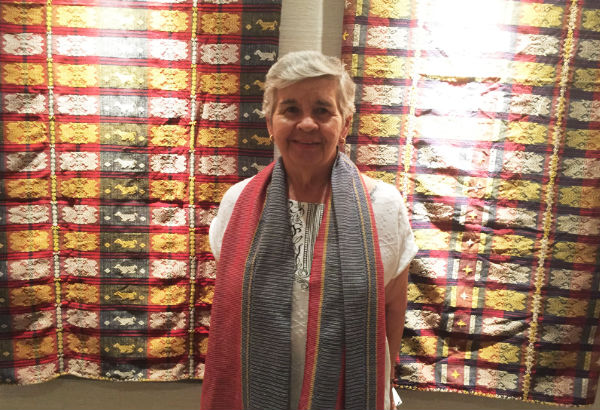
HABI Chair, Maribel Ongpin poses behind an indigenous tela during the press launch of Likhang Habi Fair 2015 held at the Two Roxas Triange, Makati on October 5.
HABI was founded to participate in the ASEAN discussion the traditional textiles and its future global role. HABI strives to encourage the preservation and blooming of Filipino indigenous weaving through education, communication and research utilizing public and private sources.
Empowering marginalized groups
Weaving is a century-old tradition performed by indigenous tribes in the Philippines. The skill has been practiced intricately and has been passed on through generations. Weavers had aged along with their craft, but due to commercialization and modernization, what was once a thriving industry whittled down to detached areas, resulting in the start of the disappearance of traditional art.
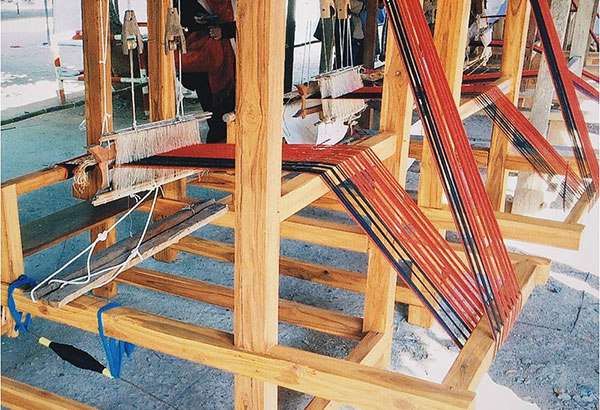
Explore the history of handloom weaving at the Likhang Habi Market Fair from October 23 to 25.
Aside from the disappearance of this traditional art, Ongpin also notes that we cannot overlook at the fact that the unappreciated weaving industry puts financial burden to the women who make up the weaving industry.
"This is not just about the tradition. It's about securing a livelihood for the women who has spent all their years mastering this art. It's about encouraging them and putting value to their art, letting them feel that this is something special," Ongpin said.
Likhang Habi Market Fair fights for the survival of Filipino culture by empowering the women behind the industry.
Bringing the weaving market closer
The fair continues to support the weaving industry by stoking a demand for indigenous textile through gathering weaving communities altogether and bringing their products closer to the market.
From Luzon to Mindanao, the three-day fair will feature weaving communities that have used pineapple, abaca, cotton, silk, banana, buri and pandan to produce their own particular weaves—Inabel from the Ilocos region and La Union, Cordillera weaves from Banaue and Padcal in Benguet, tnalak (an abaca weave) from Lake Sebu in Mindanao, piña from Aklan and Palawan, hablon and patadyong from Iloilo, Mangyan textiles and baskets from Mindoro, Yakan weave from Basilan, and mats and bags from Samar and Bukidnon.
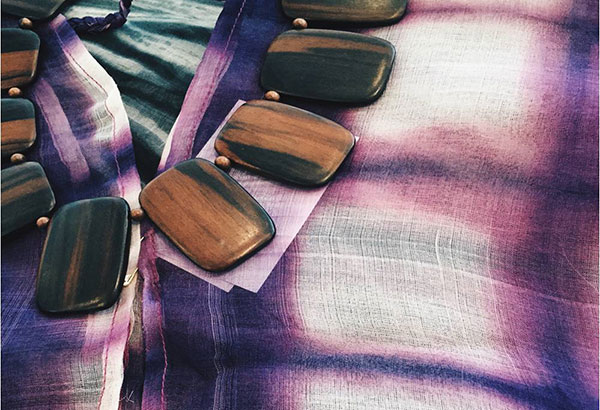
Hand-dyed cover ups by Tepiña

A melange of traditional textiles, from North to South of the Philippines and Southeast Asia
With inputs from creative consultants, fashion designers and design workshops, traditional textiles are harnessed and integrated into products that suit the everyday lifestyle, bringing a touch of artisanal creativity to home essentials such as blankets, mats, cushion covers, table runners, napkins, baskets, trays and items of furniture as well as clothing and fashion accessories.

Embroidery from the Cordillera
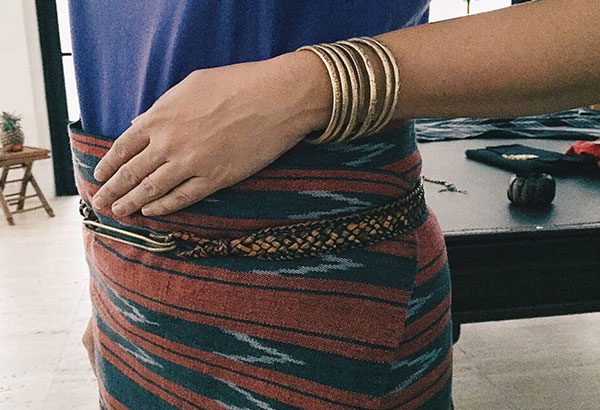
Ifugao Ikat Tapis
For this three-day bazaar, handwoven textiles made from 100-percent Philippine-grown cotton will be the highlight.
"The weavers are out in the rural area and nobody is educating them about what they can do with cotton. Nobody is selling cotton now. For some reasons all we have is synthetic," Ongpin remarked.
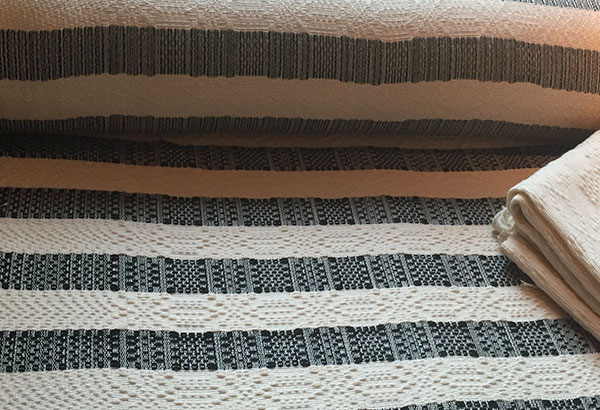
Textile made from a cotton crop financed by Habi, The Traditional Textile Council, whose advocacy is to encourage traditional weavers to go back to pure cotton.
She said the problem has been supply as less people are growing cotton. The solution is to have more cotton farms, teach cotton spinning and make them available to weavers.
Together with HABI's partner, Nooks International, Ongpin and company distributed a spun cotton to weavers across the Philippines. The group even managed to finance a 1-hectare cotton crop in Batac, Ilocos Norte to make cotton more available. "We spread the cotton for them to know there are local products. We conduct this fair to bring in the cotton closer to everyone who are not aware of it," Ongpin said.
Come, buy and meet
Now in its fifth year, Likhang Habi market fair will be bringing in the weavers themselves interact first hand with buyers rather than having a middleman to talk about their creations.
Along with the the efforts of National Commission for Culture and the Arts, the weavers will have their own booth called Culture Aid where weavers will be present.
Kelly Marian Mortenses of YakangYaka, one of the exhibitors said more than ten weavers who have never been to Manila will grace the fair, a first time for the event
With this year's ASEAN integration, Charise Tugada, president of Manila Collectibles and one of the collaborators in this year's fair, said the presence of the weavers would be a great help in promoting indigenous textiles.
"This year, we are expecting a lot of influx from our neighboring countries whose textile industry is way advance than ours. This is the perfect time for us to know more about our local weaves," she notes.
This year’s market fair will also feature the magnificent, one-of-a-kind creations of Lang Dulay, a Gawad Manlilikha ng Bayan awardee and designated a living natural treasure until she passed away earlier this year. Her family will showcase works of this important Filipino craftswoman which remain in their possession.
Apart from the upcoming fair, HABI is also looking forward to releasing the first "banig book" which will come out weeks after the exhibit itself. According to Ongpin, the book shows all the materials that banig is made of all over the country such as ratan, tikog, buri, pandan and other fibers.
The fair, which highlights the tradition of weaving or "habi," will be held at the Glorietta 2 Activity Center from October 23 to 25.
Funds raised will go to the social outreach projects of HABI in weaving communities all over the country.



















